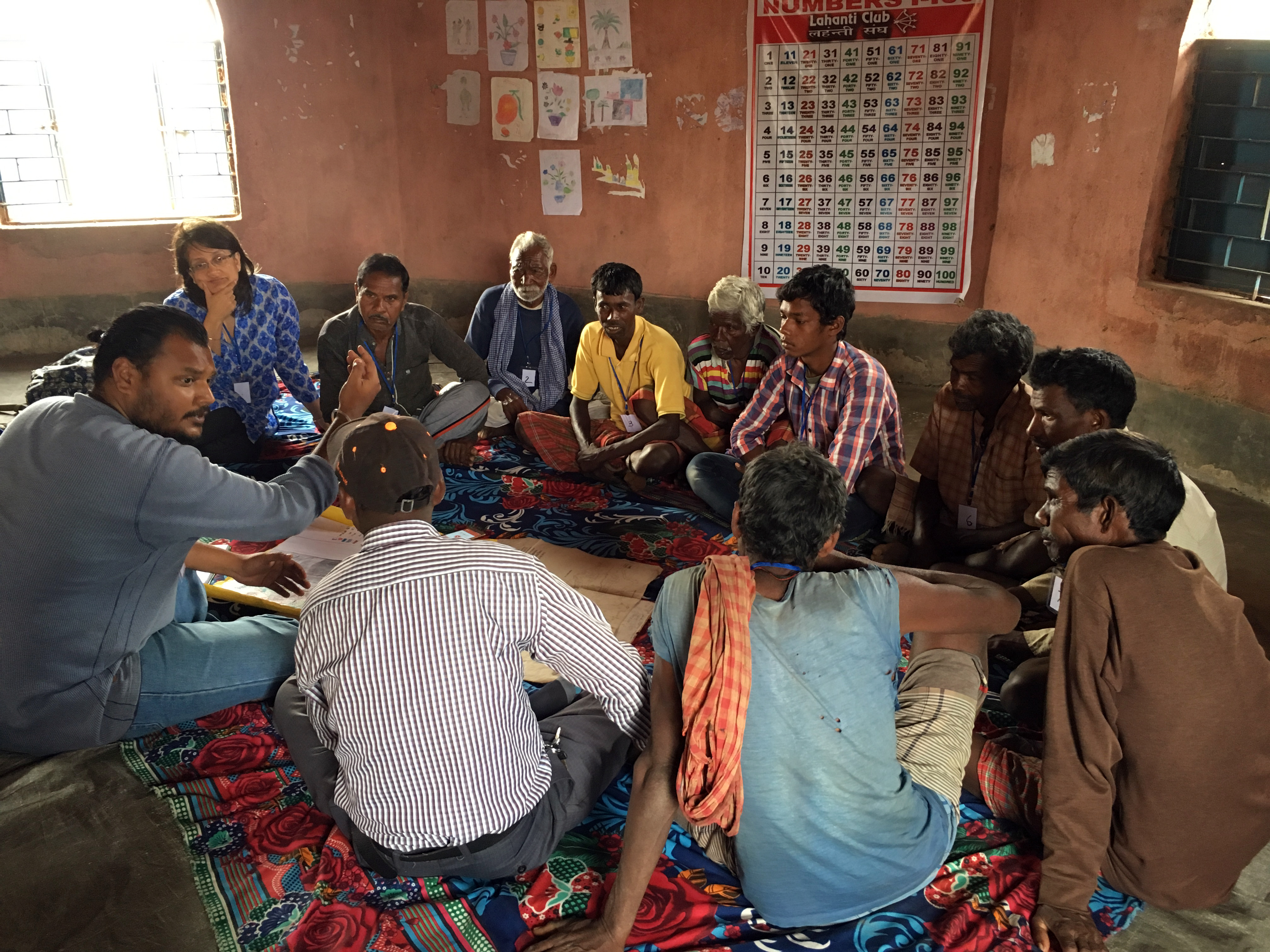Submitted by Sarah Bailey on Wed, 30/10/2019 - 09:51
TIGR2ESS Flagship Project 1 (START) and collaborator PRADAN (Professional Assistance for Development Action) recently ran a research workshop to begin one of the less glamourous, but nevertheless vital, steps in any research project: establishing a data management protocol. In a project working with vast and complex data, often in multiple languages, achieving this is no mean feat. Here, Dr Shreya Sinha, a postdoc working on Flagship Project 1 (FP1), and Dr Nivedita Narain, Integrator (Research & Advocacy), PRADAN, summarise a very successful week of co-creation.
One of the greatest joys of doing research is when data obtained with some difficulty starts to be processed. This is made even more enjoyable when it can be done as part of an engaged and cohesive team. However, even simply sifting through data can be a daunting prospect – data quality must be sound and the data must be organised in a manner that allows us to map what has been done, what remains and where to go next. This is exactly what we set out to achieve in a recent FP1 workshop run by the PRADAN team (16-21 September, 2019).
The core research team for PRADAN, Shuvajit Chakraborty and Astha Upadhyay and the authors of this blog, undertook a thorough stock-taking of what had been achieved so far and planning for next steps. This was an exercise in co-creating research through an open conversation about our shared goals and interests and the resources available for us to works towards them. Given our varying levels of experience in research and development practice, this open conversation was invaluable.
Dotting the i’s and crossing the t’s
One of the major challenges in working with our data, obtained from focus group discussions and interviews, is translation. At the PRADAN field site, Chakai block in south Bihar, we are working primarily with the Santhal adivasis (or indigenous populations). The data generated by our research are, therefore, primarily in the Santhali language, with a mix of Hindi. In the absence of persons who can easily translate Santhali directly to English, the process of data translation and processing becomes Herculean.
We spent a substantial amount of time establishing a protocol for data management. We set up a system of translation from Santhali to Hindi to English, identifying translators at each stage and putting in place a system of quality checks for transcription and translation. While this task may appear to be less of a priority, this process holds important lessons for anyone doing qualitative research. Sound translations, that retain the flavour of the respondents’ expression, allow for more robust analysis of the data. Inadequate translations and the associated loss of nuance could well lead to incorrect conclusions being drawn. Our experience also shows how research projects such as this need to be able to anticipate the financial costs, time and expertise required in undertaking this vital part of the research process.
Planning and preparation is key
Any research project needs some sort of plan of action. This is especially important for projects involving as many collaborators as TIGR2ESS. After wading through the extensive data we have collected so far, we then set about planning for the next stage of our research, including developing frameworks for preliminary data analysis for each of the different FP1 objectives.
So far, the FP1 team has been investigating questions that cut across the Flagship Project through focus group discussions, participatory social and resource mapping and semi-structured interviews of key respondents, for example, understanding the significance of agriculture vis-à-vis other livelihood options for rural households and the existing practices of agricultural production and their environmental context. In the next stage, we will explore in depth specific questions on: land tenure systems and agricultural production; improving nutrition through cultivated and uncultivated foods; migration of male household members outside the village and gendered patterns of land and forest-based work. We will start the pilot for this phase in early December, using our new data management frameworks to help ensure we answer each question.
Taking our research to those who will use it
TIGR2ESS aims to carry out research that has a practical application. As well as a chance to plan our research activities, the workshop also presented us with the opportunity to develop a plan for translating our research into real-world change.
PRADAN is part of a recent Global Research Translation Award secured by TIGR2ESS collaborator UEA to accelerate the impact of research findings from the TIGR2ESS programme. As part of this grant UEA and PRADAN are collaborating with Gram Vaani, a non-governmental organisation using digital technologies, especially mobile-based community radio, to tackle important development issues. Another collaborating institution is the Kalinga Institute of Social Sciences in Odisha.
Together with Gram Vaani we have put together a plan to create both pre-recorded podcasts as well as more interactive audio shows with local and regional experts on important issues that emerge from our research. The Lahanti Club, a rural youth club in Chakai whose formation was facilitated by PRADAN, will work with members of the Santhal community in Chakai to produce these resources. PRADAN will also establish a creative hub where illustrated books and pamphlets alongside traditional performing arts will be used to build awareness of issues of food production, health and nutrition.
These are exciting times for us as a team. We look forward to delving even deeper into our field and sharing our findings with the wider public and indeed with the community itself!

